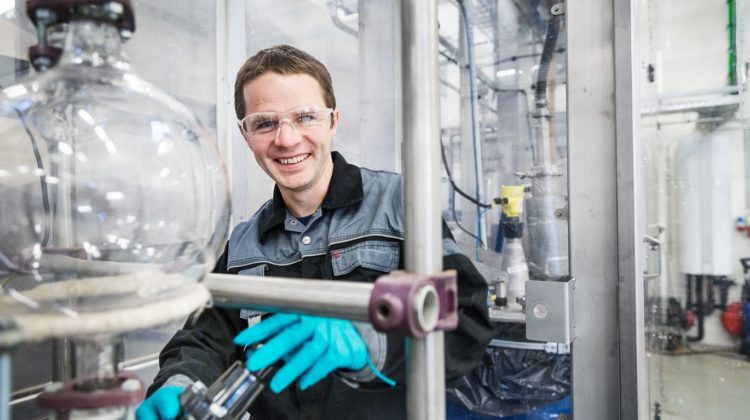
Researchers at Aarhus University in Denmark have received a grant to develop the country’s first reactor to produce carbon-negative hydrogen using biogas. The plant will use a process called catalytic pyrolysis, in which high temperatures are applied to split methane into hydrogen and solid carbon.
‘What we need right now is not just zero-carbon technologies. We also need carbon sequestering technologies with net negative carbon emissions,’ said associate professor Patrick Biller (pictured above) from the Department of Biological and Chemical Engineering, who is heading the project. ‘What we propose with this project is to adapt and optimise existing so-called turquoise-hydrogen technology for biogas instead of natural gas. The result will be a genuine carbon-negative technology that is well-suited to Denmark’s leading role as a biogas nation.’
About three per cent of global carbon emissions derive from the production of grey hydrogen, which is produced using methane from natural gas. The general alternative to this is green hydrogen, which is made by splitting water into hydrogen and oxygen through electrolysis.
However, green hydrogen production is, at best, carbon-neutral if renewable electricity is used, but never carbon-negative. It requires large amounts of energy to split water and if renewable energy isn’t used, the production emits CO2.
Currently, 95 per cent of global hydrogen is produced using a process known as steam methane reforming, in which natural gas is converted to hydrogen and CO2. Turquoise hydrogen is increasingly being investigated as an alternative; it also involves the production of hydrogen from natural gas, but pyrolysis is applied to convert the carbon into a solid. Although the carbon originates from natural gas and thus fossil resources, it isn’t emitted into the atmosphere so normal turquoise hydrogen is carbon-neutral.
Biller proposes designing and developing a technology that produces turquoise hydrogen from biogas. ‘Plants perform carbon capture every day through photosynthesis, and they actually do so quite well,’ he said. ‘Biogas originates from plant material that has absorbed CO2 from the atmosphere in this way. This means that in biogas pyrolysis, carbon originally from the atmosphere is converted into solid form; a black powder that is pure carbon and can either be deposited or used in industry for other high-value products. This means there are no carbon emissions, but instead a net negative contribution to the atmosphere.’
With the new grant, the research team now aims to design and develop a system that can manage the process. It’s no small task, even though the aim is to adapt existing turquoise hydrogen technology. ‘There’s a big difference between natural gas and biogas; for example, there are a lot of very different impurities in biogas to take into account,’ Biller said. ‘At the same time, methane pyrolysis requires high temperatures of around 1,200°C. We want to avoid this, so we will try to find metallic catalysts that can significantly reduce the amount of energy required to initiate the reaction. We expect to be able to run the reaction at temperatures around 500–600°C.’
The finished system is expected to be able to produce hydrogen using about a fifth of the energy used in green-hydrogen production. The system will be tested and run at Aarhus University’s research centre in Foulum, AU Viborg.
‘Denmark has a world-leading biogas sector,’ Biller said. ‘We’re doing great things within Power-2-X and hydrogen, and we have an energy system with large amounts of renewable energy. Turquoise hydrogen from biogas fits into this mix perfectly, and I can see great perspectives for Denmark in this area in the future.’
The researchers hope to have the new plant up and running within three years.


